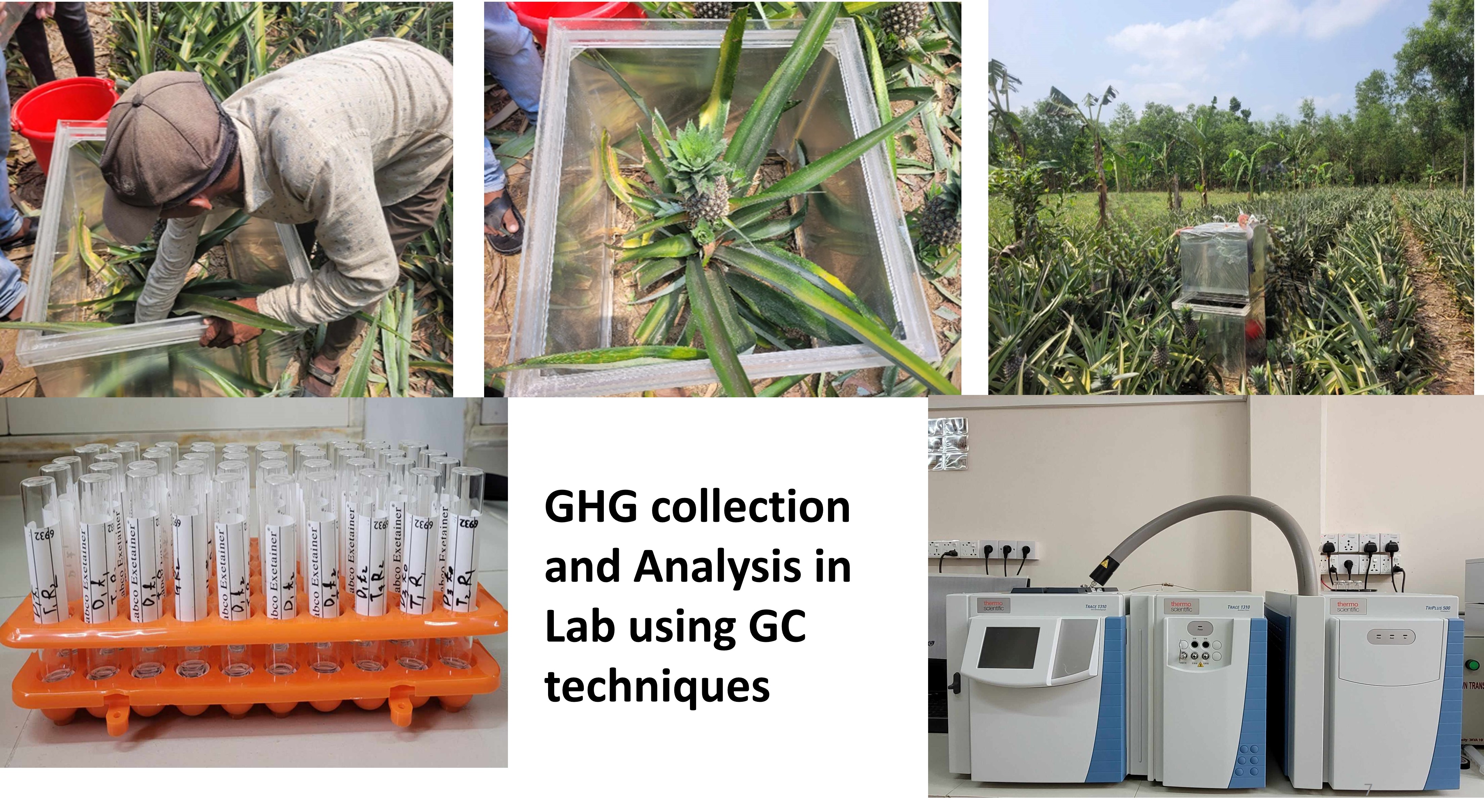Improvement of existing pineapple-based agroforestry practices and estimation of GHGs emissions
Pineapple, a key fruit in Bangladesh, thrives in agroforestry systems, enhancing farmers' livelihoods and reducing GHG emissions. A study in Madhupur and Moulvibazar evaluated improved practices using mulch, organic manure, and reduced fertilizers, boosting yield and soil health. Findings may support scaling up sustainable production, contributing to climate change mitigation at local and global levels.
Four (4) treatments with three (3) replications in RCBD design and in two locations Madhupur and Srimangal with Kalendar and Honey Queen pineapple varieties respectively. T1 = FRG, T2 = Mulching + 75% FRG T3 = Mulching + 50% FRG T4 = Control (farmer’s practice) A baseline survey was conducted in both locations. Essential soil parameters, GHG (CO2, N2O, CH4) and Physiochemical analysis of pineapple, C-sequestration of Agroforestry systems have been recorded. Baseline surveys were conducted at both study locations.
Interim results showed that Treatment T2 (Mulching + 75% FRD) gave better results in terms of growth and yield of pineapple at Moulvibazar. Treatment 2 is also effective to enhance the quality of pineapple as the Total Soluble Solids (TSS), total sugar and reducing sugar were found highest in T2. However, Treatment T3 (Mulching + 50% RFD) achieved the lowest GHG emissions as it uses less fertilizers. The baseline survey in Moulvibazar and Modhupur sites revealed significant differences in education, gender distribution, land ownership, income inequality, and agroforestry adoption. Key determinants of agroforestry adoption included land size, education, and extension services, highlighting the need for targeted support to enhance climate-smart agricultural practices.
Interim results of the project demonstrated the potential of improved pineapple-based agroforestry practices to enhance yield, reduce GHG emissions, and promote climate-smart farming. Training initiatives strengthened farmers' skills, and market linkages were established for safer, high-quality produce. The findings may guide fertilizer recommendations, support carbon trading opportunities, and ensure sustainability through institutional collaboration and future funding integration.
The research was conducted directly on farmers field and established linkages with farmers through research and farmers training. Pineapple grown with improved agroforestry practices is much safer than prevalent chemical-based production system. Hence, the results of this study will be widely disseminated to promote the pineapple grown in improved agroforestry practices in the premier market segment.
Results of agroforestry-based fertilizer trials could be used as an input to prepare a fertilizer recommendation guide for agroforestry systems. Moreover, experimental results concerning quantification of mitigation potentials (GHGs emission reduction) of improved agroforestry system could lead in developing C-trading business projects. Component organizations (BARC, BARI & BAU) can do the needful to carry out associated research from their core/external funding sources.

